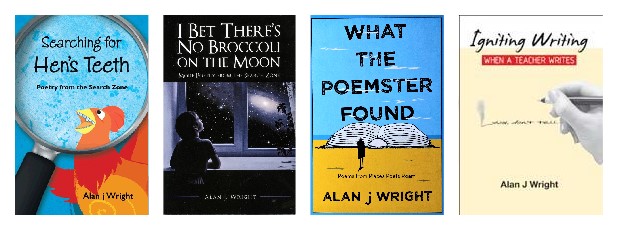I recently read a newspaper account of an approach to poetry using Lego blocks used by Daniel Donahoo that was highlighted at the Emerging Writers Festival in Melbourne
I settled on using washed stones and combining them with the deconstruction of original poetry pieces. Because I chose to work with stones, I decided to choose short pieces of verse. Imagine working with John Milton’s ‘Paradise Lost,’ you would need a truck load of gravel!
Following the creation of the poem, Vicki was curious to view the original and compare the two pieces. Both of us see potential for extending the vocabulary of students in this exercise as well.
Working with second language learners was a further motivation for pursuing this type of activity as it emphasizes text structure and encourages vocabulary development.
A search through my poetry collection unearthed Charlotte Zolotow’s delightful books of short poems, ‘Seasons.’ I selected ‘My Shadow’ a poem containing a mere twenty words. I then wrote each word on a separate stone with a permanent marker. Following this, I presented the stones in a container and trialled them on a willing participant.-In this instance, my wife, and colleague, Vicki.The aim of the exercise was to use as many of the words as possible to create a poem. You are faced with using only the words that are available, -and using them to guide your word creation.
The stone poet works to create an original poem, using their own line breaks and as many pieces as they see fit. It also challenges the ‘writer’ to consider language construction when juxtaposing the words available.The economy of words one associates with poetry is emphasized in the task. The fact that opportunities for a range of student responses is possible, adds to the open ended nature of the task. Every participant is able to experience a measure of success.
Following the creation of the poem, Vicki was curious to view the original and compare the two pieces. Both of us see potential for extending the vocabulary of students in this exercise as well.
Working with second language learners was a further motivation for pursuing this type of activity as it emphasizes text structure and encourages vocabulary development.




Comments
Post a Comment